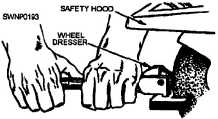
Figure 12-4. - Eye shields for bench and pedestal type of grinders.
prevent work from being wedged between the tool rest and the wheel. Turn the wheel by hand after adjusting the tool rest to ensure there is satisfactory clearance completely around the wheel (fig. 12-5).
The grinding wheels themselves can be sources of danger and should be examined frequently, based upon usage, for irregularities and soundness. You can test a new wheel by suspending it on a string or wire and tapping the side of the wheel with a light metal rod. A solid wheel will give off a distinct ringing sound, A wheel that does not give off such a sound must be assumed to be cracked and should be discarded. Under no circumstances should it be used. Since it is not practical to check the wheels by this manner every time you use the grinder, make it a habit never to stand in front of a grinder when it is first turned on. A cracked wheel can disintegrate and become projectiles quickly.
The wheel must also run true and be balanced on the shaft. A WHEEL DRESSER (fig. 12-6) should be used to bring abrasive wheels back to round and

Figure 12-5. - Properly spaced tool rest.

Figure 12-6. - Mechanical wheel dresser.
remove the glaze that occurs after heavy use. This is done by holding the dresser firmly against the wheel with both hands, using the tool rest for support. Then, as the wheel turns, move the dresser back and forth across the surface (fig. 12-7). For maximum efficiency and safety in operating the grinder, you should observe the following rules:
1. Use the face of the wheel, never the sides.
2. Move the work back and forth across the face of the wheel. Even wear results because this action prevents the wheel from becoming grooved. 3. Keep the wheel dressed and the tool rest properly adjusted.
Do not shape soft metals, like aluminum, brass, and copper, that tend to load (clog) the abrasive wheel. These metals should be shaped by other methods, such as tiling, sanding, and chipping.
PNEUMATIC POWER TOOLS
The portable power tools that are available for use are either powered by electric motors or by air (pneumatic) motors. Whether powered by electricity or compressed air, the tools are basically the same and the procedures for using them are the same. This section will deal with pneumatic tools since these require unique maintenance and servicing on the jobsite or in the shop.
NOTE: All low-pressure compressed air systems should have a filter, a regulator, and a lubricator assembly installed at the outlet. This assembly will ensure delivery of clean, regulated mist lubricated compressed air for the operation of pneumatic tools.

Figure 12-7. - Using a wheel dresser.
Continue Reading